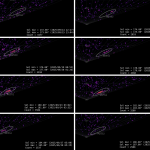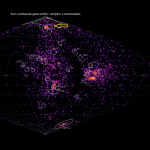The UAEMMN: A prominent meteor monitoring system in the Gulf Region
Authors: Dr. Ilias Fernini(1), Aisha Alowais(2), Mohammed Talafha(2), Maryam Sharif(2), Yousef...
Read MorePosted by Mohammed Fadil Talafha | Sep 27, 2019 | News |
Authors: Dr. Ilias Fernini(1), Aisha Alowais(2), Mohammed Talafha(2), Maryam Sharif(2), Yousef...
Read MorePosted by Robert Lunsford | Sep 20, 2019 | News |
During this period the moon reaches its last quarter phase on Sunday September 22nd. At this time the half-illuminated moon will rise near 23:00 local summer time (LST) and will remain in the sky the remainder of the night. Successful meteor observations can be obtained by simply viewing in a direction with the moon at your back. The moon will become less of a problem with each successive night as its phase wanes and it rises later in the morning. The evening sky is unaffected by moonlight but still produces less activity than the morning hours.
Read MorePosted by Paul Roggemans | Sep 18, 2019 | News, Reports |
A summary of the activity of the CAMS BeNeLux network during the month of August 2019 is presented. The CAMS BeNeLux network experienced an exceptional month with favorable weather circumstances. An all-time record number of...
Read MorePosted by Paul Roggemans | Sep 17, 2019 | News, Reports |
A summary of the activity of the CAMS BeNeLux network during the month of July 2019 is presented. July 2019 offered exceptional many clear nights resulting in 13243 multiple station meteors, with a new record number for the...
Read MorePosted by Paul Roggemans | Sep 13, 2019 | Fireballs, News |
1 Introduction A bright daylight fireball appeared on September 12 at 12h49m48s UT, seen by millions of casual witnesses in north western Europe. The event took place over Northern Germany, just south of Denmark (φ = 54.5° N, λ...
Read More

